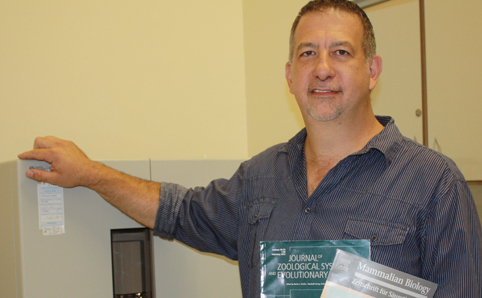Double achievement for Prof. Paul Grobler
 |
|
Prof. Paul Grobler
Photo: Supplied
25 April 2012
|
Early this year, two journal editions appearing almost simultaneously in Europe featured cover photographs based on papers by Prof. Paul Grobler of the Department of Genetics and his collaborators.
These papers stem from collaborations with Prof. Gunther Hartl at the University of Kiel (Germany) and Dr Frank Zachos from the Natural History Museum in Vienna (Austria). Both papers cover aspects of the genetics of southern African antelope species.
The first paper appeared in the Journal of Zoological Systematics and Evolutionary Research” (from the Wiley-Blackwell group). This was titled “Genetic structure of the common impala (Aepyceros melampus melampus) in South Africa: phylogeography and implications for conservation”.
In this paper, the team analysed impala from various localities in South Africa to determine the relationship between distribution and genetic structure. The results suggest a clear relationship between genetic characteristics and habitat features that regulate gene flow.
The second appeared in the journal Mammalian Biology (from the Elsevier group), with the title “Genetic analysis of southern African gemsbok (Oryx gazella), reveals high variability, distinct lineages and strong divergence from the East African Oryx beisa”.
Here, the researchers looked at various aspects of the genetics and classification of gemsbok. Among the notable findings is that gemsbok populations on the game farms studied are less inbred than previously predicted.
Proffs. Grobler and Hartl initiated these projects on gemsbok and impala, with sub-sections of the research later completed as M.Sc. projects by students from both South Africa and Germany.
Prof. Grobler has been involved with aspects of the population genetics of various mammal species since the early 1990s, and continued with this line of research after joining the UFS in 2006. Current projects in this field include work on wildebeest, vervet monkeys and white rhinoceroses.